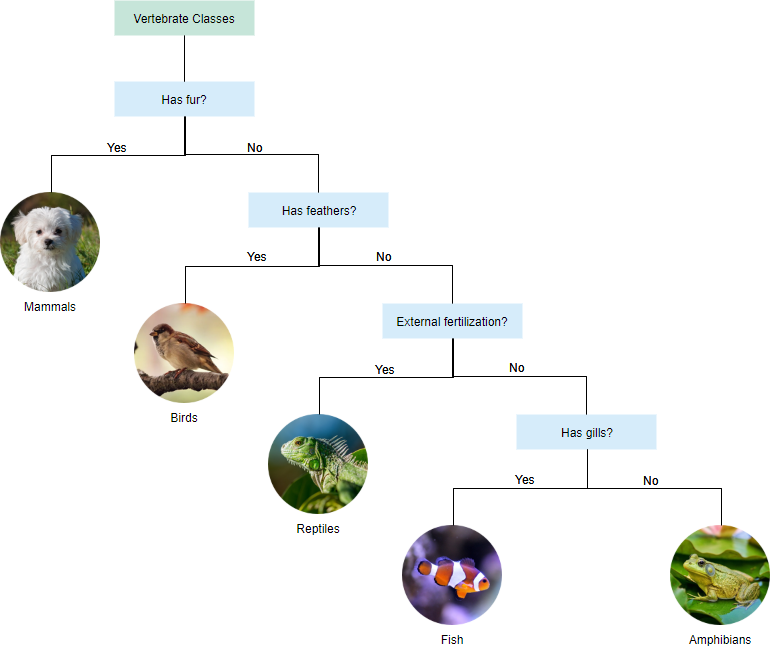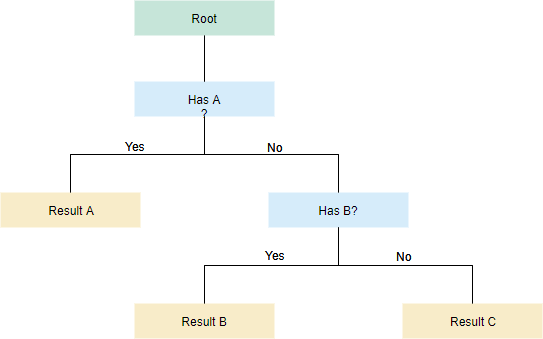Classification is very important to the field of biology. As we continue to discover new species, learn better techniques for analyzing relationships between species (i.e. DNA analysis) and share information internationally it is important to have systems in place to identify and classify organisms.
A dichotomous key is a tool that helps to identify an unknown organism. A dichotomous key is a series of statements consisting of 2 choices that describe characteristics of the unidentified organism. The user has to choose from which of the two statements best describes the unknown organism, then based on that choice moves to the next set of statements, ultimately ending in the identity of the unknown.
Dichotomous keys are often used in field guides to help users accurately identify a plant or animal but can be developed for virtually any object. They are particularly helpful when two species are very similar to one another. For example, a dichotomous key can be used as a tool for users to determine the identity of items in the natural world, such as trees, wildflowers, mammals, reptiles, rocks, and fish. Keys consist of a series of choices that lead the user to the correct name of a given item. “Dichotomous” means “divided into two parts”.

Edit this Dichotomous Key example
Therefore, dichotomous keys always give two choices in each step.
- With each sequential division, more information is revealed about the specific features of a particular organism
- When the organism no longer shares its totality of selected characteristics with any organism, it has been identified
Dichotomous Key Template
